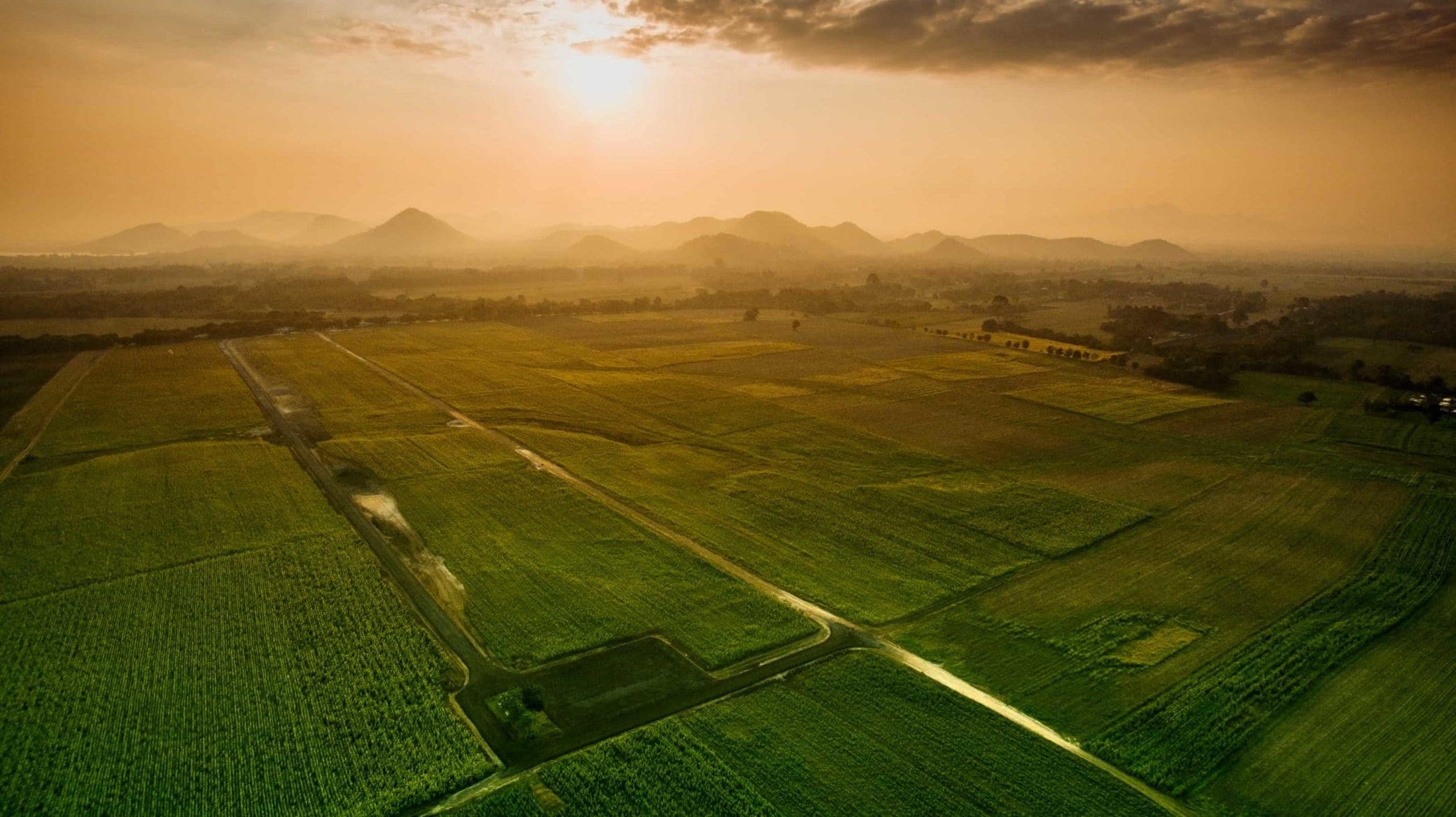How Land Marketing Differs from Marketing Homes
Digital marketing for real estate isn’t one-size-fits-all. With so many different property types, markets, types of buyers, and seller needs, tailoring your online strategy is essential. This is especially true for land marketing, which differs in several key ways from marketing homes.
Typically, real estate marketing strategies draw attention to a property’s features such as amenities, bedrooms, and outdoor space, among other things, as well as the area’s lifestyle. For seller strategies, emphasizing specific services and highlighting results, such as through client success stories and recently sold properties, can be effective. But how do you market a property that doesn’t have most (if any) of those features or get sellers to trust you can sell their property when many land owners’ properties are as unique as them?
Digital marketing strategies for land present a unique challenge in the real estate industry. When trying to attract land buyers online, you have to get a little more creative in how you show off a property and demonstrate its value. Read on to learn more about how digital marketing for land differs from selling homes and how to create a digital strategy to target and attract land buyers and sellers.
7 Tips for the Best Land Marketing Strategies
- Understand and highlight what the land is zoned for
- Highlight the potential
- Provide specific details
- Include aerial images and videos
- Optimize your website for land listings
- Create and share land-specific content
- Leverage targeted ad campaigns
Understand and highlight what the land is zoned for
One of the most important elements in creating a land marketing strategy is knowing what the land is zoned for. Land buyers often look for land for specific uses such as hunting, recreation, logging, ranching, building, etc. Crafting a detailed listing description with this information not only provides buyers with the information to make an informed decision, but also boosts your SEO (more on this later) and helps set the foundation for a more targeted strategy. With the zoning information, you can also create blog posts about changing land classifications and zoning exemptions, which can also be shared on your social media. Pay particular attention to up-and-coming areas and craft content around land classifications and zoning regulations specific to each region, city, town, and even neighborhood you serve.
Highlight the potential
A piece of land is sort of like a blank canvas. There are seemingly infinite ways to fill up the space and create something unique. By highlighting and elaborating on the land’s potential, you can help buyers picture themselves using the land. Does the property have space for outdoor recreation? Can the land support animals or crops? Or, is it an ideal space for building a home? Use the listing description, a video, a blog post, email campaign, or social media to create interest in what’s possible. And make sure to research the most popular keywords and relevant search trends so you can tap into what people are already interested in as you craft your land listing’s SEO strategy. Take into consideration the type of land and its surrounding area, as well as the property itself, when looking for trending topics you can use in your land marketing.
Provide specific details
Providing a lot of details is essential for marketing all property types in real estate, but especially so when marketing land. And, the information land buyers are looking for differs widely from home buyers. Details such as zoning, buildable areas, restrictions, the status of utilities, lot dimensions, site maps, soil health, and more can help potential buyers understand the property better. Use the listing description on your real estate website to provide users with all the details about the property. Or, you can feature the property in a blog post on your site and share it on your social media platforms to extend its reach. Lastly, create one-click searches to make it easy for people to browse available land by type, and make sure these pre-populated searches are specific to the types of land and uses so people can most easily find the ideal land listing for them. If your website visitors have to click more than three pages deep to find what they’re looking for, they’re much more likely to lose interest and leave.
Include aerial images and videos
Visuals are essential in real estate and marketing land is no exception. However, taking images of a piece of land is much different than a home. In order to capture what it offers and the feeling of the land, take high-quality pictures of some of the key features throughout the property, such as bodies of water, views, trails, fields, etc. Even better, take a video of the property. Drone photography is a popular way to capture an aerial view of a property, especially when there are many acres. You can buy a drone yourself or enlist the help of an experienced photographer. An aerial view of your land listing allows interested buyers to not only see the land in its entirety, but also the surrounding area, which is especially important for those looking to develop the land. You can also upload the video onto your YouTube channel and share it across multiple platforms, giving you the opportunity to get in front of more people. Many land brokers overlook the advantages and opportunities of video, especially developing a YouTube following, so this can be a great way to stand out and show how you’re different to land owners who may list with you in the future, as well as to attract and establish trust with potential buyers.
Optimize your website for land listings
Having a real estate website that’s user-friendly and optimized is essential for attracting leads. By incorporating relevant keywords for land buyers specifically, you can give your real estate website or land website’s SEO a boost and show up when potential buyers are searching. Incorporate important keywords into landing pages and one-click searches, or recommended searches, such as “ranches for sale in [your area]” or “land for hunting in [your area]”. Keep in mind what’s most appealing about the land in order to create searches that are most relevant to potential buyers. Often, the more specific the search, the higher the person’s intent in actually reaching out to a land broker and finding the right land for sale for them.
Create and share land-specific content
Another way to attract land buyers is to create and share land-specific content that’s relevant to these buyers. You can create a landing page with frequently asked questions about buying and/or owning land, links to area information if you’re in a more developed area, local laws and regulations, such as hunting laws and seasonality, and reports on the soil. You can also share any zoning changes or updates, environmental studies on the area, tips for taking care of the soil, and more.
Leverage targeted ad campaigns
Online advertising continues to be a staple in digital marketing for real estate. Creating ads allows you to reach potential leads with visuals and copy that are most relevant to them. And as mentioned previously, understanding what the land can be used for and your buyer’s motivation will set the foundation for an effective strategy. For example, if you live in an area with lots of ranches and farms, you could create ads that showcase the quality of the land and how it can be used for animals and crops. Or, if you live in a more residential area, create ads that give insight into what it would be like to live in that community and the advantages of building vs. buying an existing property.
Plus, if you use omnichannel marketing to target potential leads wherever they are online, including on search engines, social media, and other websites, you can extend your reach even further and drive the frequency necessary to establish trust (people are more likely to click on ads when they’ve heard of the company before). Don’t forget to review your website and advertising campaign analytics to better understand current visitors and opportunities for growth. As one example, you can discover what and from where people are searching and serve ads in those areas reflecting their areas of interest, reaching those who are most likely interested in buying land for sale online with content that they’ll notice.
The key to marketing land online is understanding what the land is or can be used for, and telling that story to your ideal audience where and when it’ll get noticed by them. By keeping in mind what appeals to your ideal land buyers and sellers, you can create a tailored and more effective digital strategy to reach and engage them, as well as get them talking about and sharing information you provide with others.
Need help creating a land marketing strategy that’s as unique as you are? Connect with one of our strategists today to get personalized recommendations on how to stand out and sell more land online.










